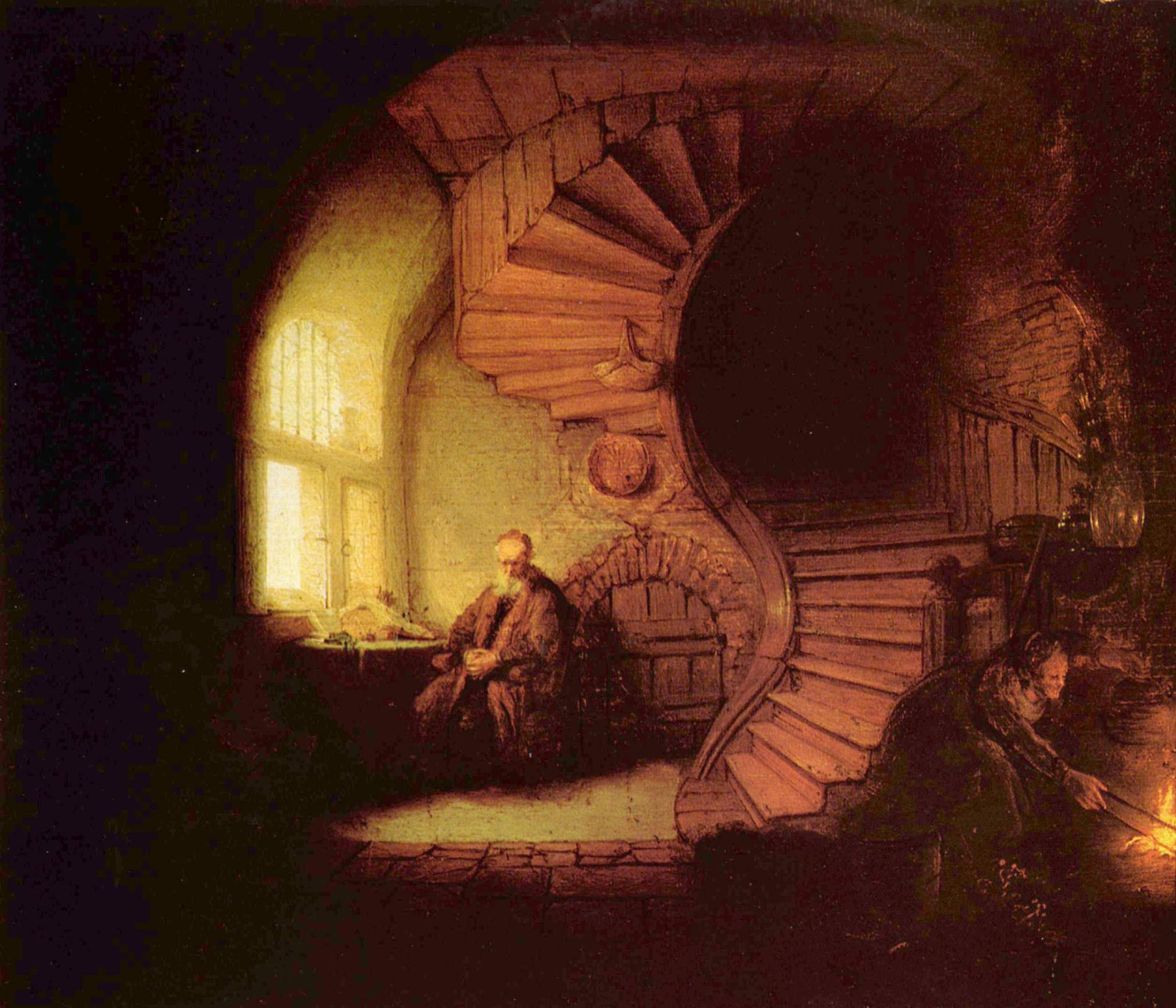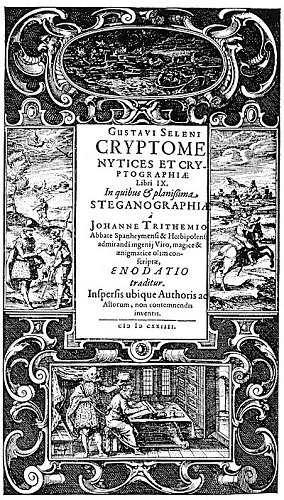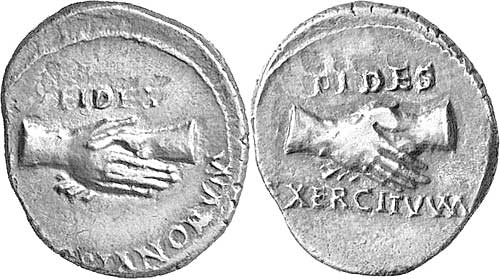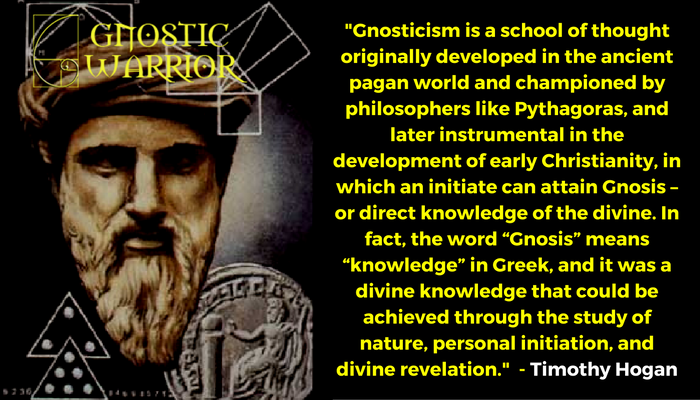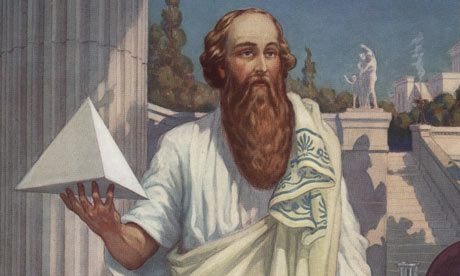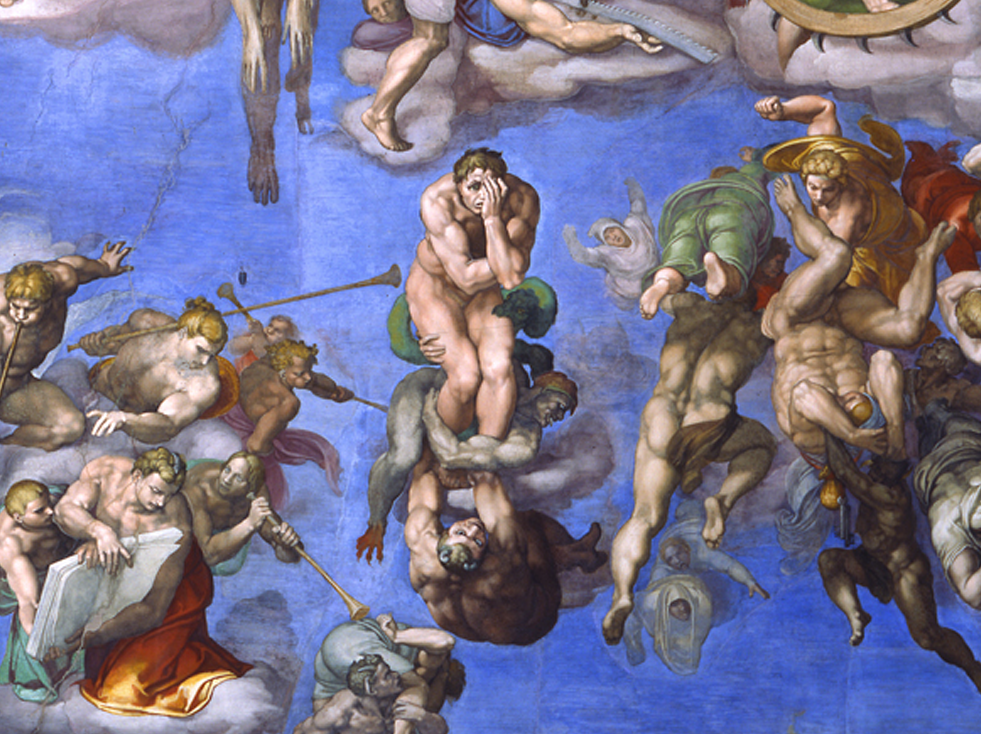Pythagoras taught that everything in nature was divisible into three parts and that no one could become truly wise who did not view every problem as being diagrammatically triangular. He said, “Establish the triangle and the problem is two-thirds solved”; further, “All things consist of three.” In conformity with this viewpoint, Pythagoras divided the universe into three parts, which he called the Supreme World, the Superior World, and the Inferior World. The highest, or Supreme World, was a subtle, interpenetrative spiritual essence pervading all things and therefore the true plane of the Supreme Deity itself, the Deity being in every sense omnipresent, omniactive, omnipotent, and omniscient. Both of the lower worlds existed within the nature of this supreme sphere.
The Superior World was the home of the immortals. It was also the dwelling place of the archetypes, or the seals; their natures in no manner partook of the material of earthiness, but they, casting their shadows upon the deep (the Inferior World), were cognizable only through their shadows. The third, or Inferior World, was the home of those creatures who partook of material substance or were engaged in labor with or upon material substance. Hence, this sphere was the home of the mortal gods, the Demiurgi, the angels who labor with men; also the dæmons who partake of the nature of the earth; and finally mankind and the lower kingdoms, those temporarily of the earth but capable of rising above that sphere by reason and philosophy.
The digits 1 and 2 are not considered numbers by the Pythagoreans, because they typify the two supermundane spheres. The Pythagorean numbers, therefore, begin with 3, the triangle, and 4, the square. These added to the 1 and the 2, produce the 10, the great number of all things, the archetype of the universe. The three worlds were called receptacles. The first was the receptacle of principles, the second was the receptacle of intelligences, and the third, or lowest, was the receptacle of quantities.
“The symmetrical solids were regarded by Pythagoras, and by the Greek thinkers after him, as of the greatest importance. To be perfectly symmetrical or regular, a solid must have an equal number of faces meeting at each of its angles, and these faces must be equal regular polygons, i. e., figures whose sides and angles are all equal. Pythagoras, perhaps, may be credited with the great discovery that there are only five such solids.* * *
‘Now, the Greeks believed the world [material universe] to be composed of four elements–earth, air, fire, water–and to the Greek mind the conclusion was inevitable that the shapes of the particles of the elements were those of the regular solids. Earth-particles were cubical, the cube being the regular solid possessed of greatest stability; fire-particles were tetrahedral, the tetrahedron being the simplest and, hence, lightest solid. Water-particles were icosahedral for exactly the reverse reason, whilst air-particles, as intermediate between the two latter, were octahedral. The dodecahedron was, to these ancient mathematicians, the most mysterious of the solids; it was by far the most difficult to construct, the accurate drawing of the regular pentagon necessitating a rather elaborate application of Pythagoras’ great theorem. Hence the conclusion, as Plato put it, that ‘this (the regular dodecahedron) the Deity employed in tracing the plan of the Universe.’ (H. Stanley Redgrove, in Bygone Beliefs.)
Mr. Redgrove has not mentioned the fifth element of the ancient Mysteries, that which would make the analogy between the symmetrical solids and the elements complete. This fifth element, or ether, was called by the Hindus akasa. It was closely correlated with the hypothetical ether of modern science, and was the interpenetrative substance permeating all of the other elements and acting as a common solvent and common denominator of them. The twelve-faced solid also subtly referred to the Twelve Immortals who surfaced the universe, and also to the twelve convolutions of the human brain–the vehicles of those Immortals in the nature of man.
While Pythagoras, in accordance with others of his day, practiced divination (possibly arithmomancy), there is no accurate information concerning the methods which he used. He is believed to have had a remarkable wheel by means of which he could predict future events, and to have learned hydromancy from the Egyptians. He believed that brass had oracular powers, because even when everything was perfectly still there was always a rumbling sound in brass bowls. He once addressed a prayer to the spirit of a river and out of the water arose a voice, “Pythagoras, I greet thee.” It is claimed for him that he was able to cause dæmons to enter into water and disturb its surface, and by means of the agitations certain things were predicted.

Moe is the founder of GnosticWarrior.com. He is a father, husband, author, martial arts black belt, and an expert in Gnosticism, the occult, and esotericism.

